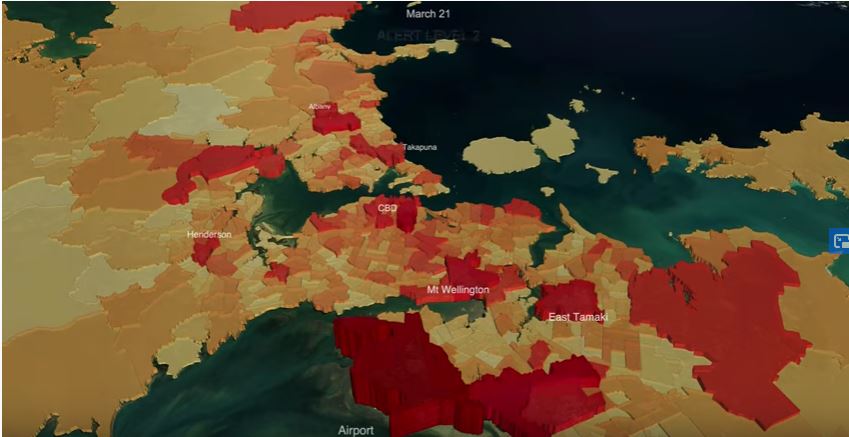As part of the SMC’s COVID-19 response, we are funding data visualisations that are available to media under creative commons.
Freelance geographer Chris McDowall has created videos of population movements in our three main centres, which shows how we moved around in the first few weeks of lockdown. The visualisations use anonymised cell phone tower data, not location data. The data also modelled the population counts to take into consideration those who don’t have mobile phones.
Chris’ work has been funded through the SMC’s COVID-19 response and the videos are available for re-use under creative commons.
The data visualisations were released to media under embargo in a media briefing, which is available below. University of Canterbury Associate Professor Malcolm Campbell also joined and responded to questions on how this kind of movement data can help inform New Zealand’s COVID-19 response.
Q&A with Associate Professor Malcolm Campbell
Deputy Director, GeoHealth, University of Canterbury
What can this data tell us? Why/how is it useful?
“It looks like a heartbeat which is really cool. Specifically for Covid-19 what it actually allows us to get a handle on is less of an anecdote – in terms of, we kind of think that people are behaving themselves, we kind of think people might not be moving around. This actually shows us that broadly speaking people are being well behaved and listening to the key messages that we’ve all been hearing. And that’s actually quite a good news story from my point of view that people are adhering to the rules. It’s encouraging as well that it triangulates with the Apple and Google data that we’ve seen. So we’ve seen similar drop-offs in other data sets as well.”
We’ve been hearing a lot about contact tracing, possibly using bluetooth – how might this data be used as we move into alert level three?
“Contact tracing is an important weapon in understanding things like how to handle coronavirus, as well as things like handwashing and physical distancing. So this specific data is like a population estimate based on cell phone data and it does take those digital divides into account.
“This Bluetooth apps work really well if you have a Smartphone, you have Bluetooth turned on and you have the app. It feels a bit patronising to say this but of course, if you don’t take your phone and you don’t have the app turned it doesn’t work very well so if I head off to the supermarket and don’t take my phone with me it just doesn’t work and so you probably need about four out of every five people, roughly, to have an app like that work for contact tracing.”
Some people might be concerned to realise their movement can be tracked like this, do you have concerns about privacy?
“This isn’t individuals’ [data]. I have done research previously that’s followed individuals and whenever I teach my students about privacy we actually track them and they see their individual data so that they can see why that’s cool and also really scary. So this is not individual data.
“For me, my data is in this dataset. I’m happy it’s in this data set and I’m remarkably relaxed about that kind of concern. So the level of detail is such that I wouldn’t really have concerns about privacy. The other thing is whenever we’ve done research in the past on mobile phones and tracking and that sort of stuff people actually seem remarkably agreeable to providing their data when they can see a public health benefit or something that’s contributing to society. So for me, that is probably what makes me much more comfortable about something like this.”
How else might this data be used in relation to the ongoing COVID-19 response?
“Specifically around Covid-19 it could be useful as we move around the alert levels to get a sense of the differences as we move through those phases. To see how much more or less movement is generated in between these different stages. That might be a really useful way of getting a handle on this, so we move beyond the anecdote, what might be happening, and we can actually see it in real data. And that’s very useful for us as scientists for much more accurate predictions in things like pandemic models. So if we were trying to predict how far it had spread, having data like this is really invaluable to understand those movements of people.”
